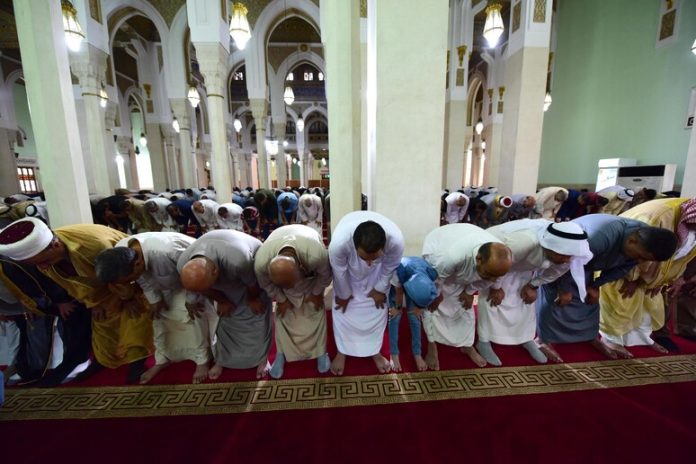by EH
Amid the vibrant tapestry of multiculturalism, the air thick with the scents of traditional foods and the hum of reverent prayer, the imam of Trieste proclaimed twice in Italian, “Islam is peace,” at a celebration of the Festival of Sacrifice. This significant event, rooted in the sacred texts of all monotheistic religions, brought together a diverse assembly of Muslims, showcasing the rich mosaic of ethnicities and nationalities.
Over a thousand Muslims gathered at the sports field this Sunday, representing at least 50 different nationalities. The festival was a spectacle of diversity: the colorful garments of Africans, the distinct black attire of Bosnians, and traditional clothing from countries as varied as Morocco, Afghanistan, and Bangladesh. The event featured a traditional separation of genders, with around eighty women, accompanied by children, positioned at the back while the men performed their prayers at the front.
Trieste’s Islamic community, predominantly Sunni, is flourishing, with approximately 8,000 members. This makes it the second-largest religious community in the city, alongside the Orthodox Christians. The community is supported by two associations, including the Said Nursi association, which has been a cornerstone for 20 years. This association, primarily Kurdish, has recently acquired a new location on Via Sette Fontane, transitioning from its long-time prayer center on Via Maiolica.
Despite the vibrant turnout, representatives from other faiths were notably absent, underscoring the ongoing challenge of fostering interreligious dialogue. “We are reaping the secular climate that others have sown,” reflected Akram Omar, president of the Triestine Islamic community. “We too aspire to have a true place of worship, a mosque. In Trieste, this would not be an issue, I hope.”
As Trieste’s Islamic community continues to grow, so does its desire for integration and recognition. The Festival of Sacrifice stands as a testament to their faith and unity, even as they navigate the complexities of their place within the broader societal tapestry.





























